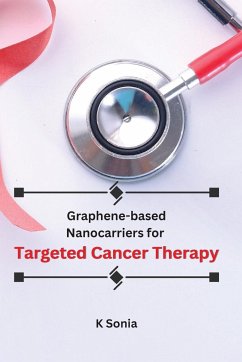The book "Graphene-based Nanocarriers for Targeted Cancer Therapy" by K Sonia provides an in-depth analysis of the latest advancements in cancer therapy utilizing graphene-based nanocarriers. The book highlights the importance of targeted drug delivery for improving the efficacy of cancer therapy and reducing systemic toxicity. The use of graphene as a nanocarrier is explored in detail, with a focus on its unique physicochemical properties that make it an ideal material for drug delivery. The book discusses the biocompatibility and biodegradability of graphene-based nanocarriers, as well as their surface modification for enhancing tumor targeting and cell uptake. Various therapeutic agents such as chemotherapy, immunotherapy, photothermal therapy, gene therapy, RNA interference, and siRNA are also examined, along with their respective mechanisms of action and potential applications. The pH-responsive and stimuli-responsive properties of graphene-based nanocarriers are discussed, along with biomimetic approaches to improve drug release and encapsulation. The book also covers other nanocarriers such as dendrimers, polymeric micelles, liposomes, carbon nanotubes, magnetic nanoparticles, gold nanoparticles, silver nanoparticles, and platinum nanoparticles, highlighting their advantages and limitations in drug delivery. The use of antibody conjugation, peptide conjugation, aptamer conjugation, protein adsorption, and ligand-mediated targeting for active and passive targeting of cancer cells is also reviewed, along with the enhanced permeability and retention effect and blood-brain barrier. The pharmacokinetics, pharmacodynamics, toxicity, and safety of graphene-based nanocarriers are discussed, with a focus on their clinical translation. Overall, this book provides a comprehensive overview of the potential of graphene-based nanocarriers for targeted cancer therapy, making it an essential reference for researchers, clinicians, and students in the field of cancer research.







